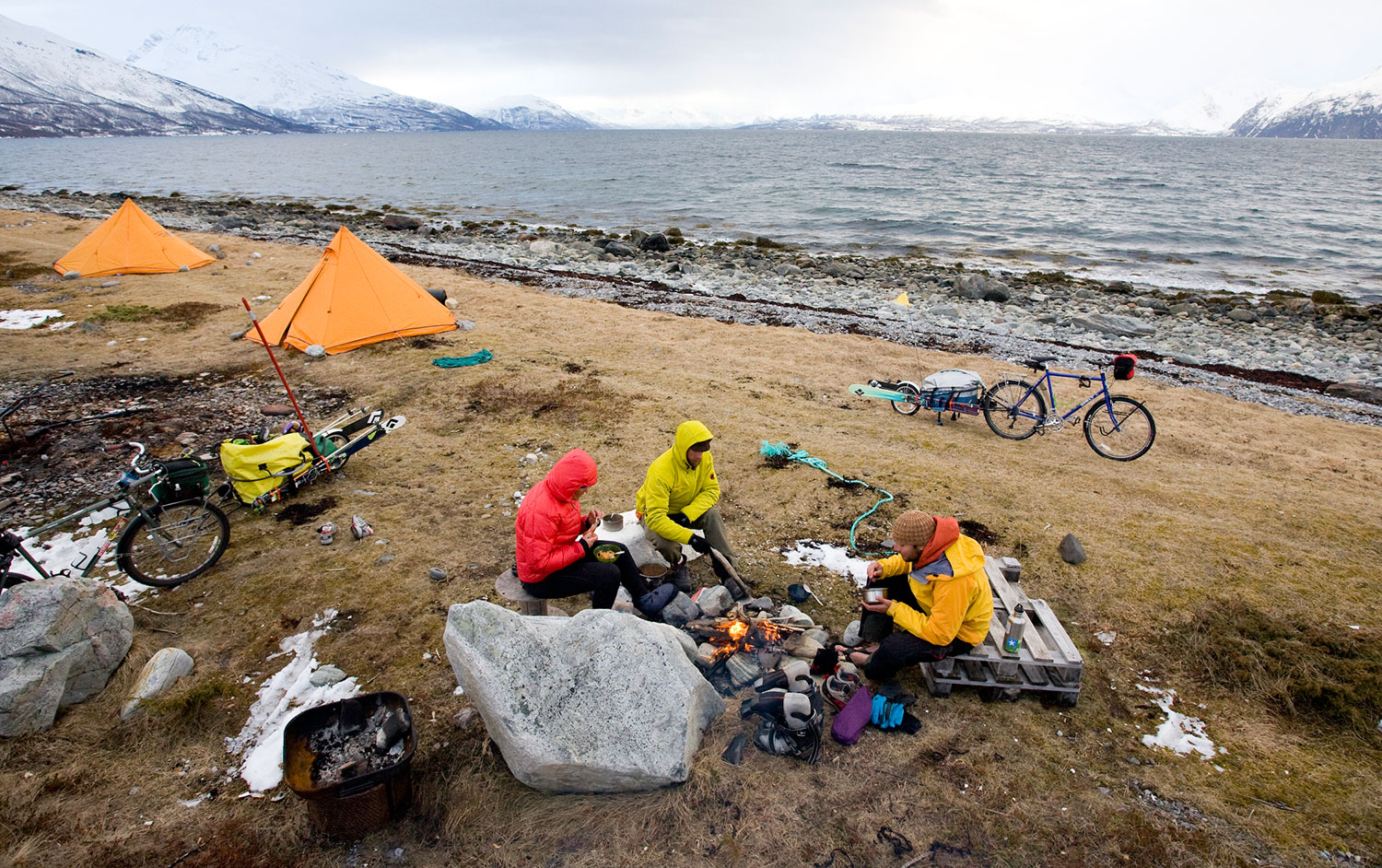Imagine that you are pedaling along a very quiet dirt road along the shores of a faraway ocean, with the nearest village more than ten miles distant.
This could be northern Norway, the Faroe Islands or Newfoundland. There are few trees in sight, but there are tall boulders, a stray barn or boat house, and even rolls of hay cut and gathered from small plots of pasture established over the generations. At nearly 10pm, the sun is finally approaching the horizon, setting the water and shoreline aglow. You spot a clear stream running to the sea and a sheltered nook among the rocks a few hundred yards ahead. It requires an easy five-minute push across some grass and gravel to get there, but it’s got camp for the night—or maybe two—written all over it. And there are fish jumping.
Such is the beauty of a bicycle-camping adventure: traveling self-supported, by bicycle, with a healthy dose of freedom, mobility and spontaneity shaping each day. Add a trailer capable of carrying your skis or snowboard, a quiver of surfboards, or climbing gear, and you might not ever come back.
While it’s not just anywhere in the world that you can simply pull over and camp freely, it’s much easier to do in most places than most of us could imagine. We know this, having spent a collective fourteen months of our lives, across more than a dozen countries, bicycle camping. Only thrice have we paid to camp in a campground: once in the middle of Copenhagen, Denmark, once in the city of Oslo, Norway, and once inside a national park in Chile.
When out in the open countryside, so long as land is not clearly posted, it’s easy enough to simply tuck away for a night without issue. Keep a low profile, be respectful and leave the place even nicer than you found it—and the camping gods, and locals, will reward you. If the area is more thickly inhabited, it’s wise to ask for permission to camp on someone’s land, even if it nearly always leads to an invitation indoors. You’ll have to be pretty diplomatic if you want to insist on camping without disrespecting the invitation, so be careful what you ask for.
Still, as luxurious as camping really is, every once in a while it’s nice to stay indoors, eat a home-cooked meal and soak up some different culture. One of our favorite things about bicycle camping is the access it provides between the places people live and the places they don’t. After waking up and pedaling away from a friendly village, you could easily be twenty miles up a remote valley by lunchtime, wondering if the dirt road that has turned into a faint farm trail will last another mile. If it doesn’t, there’s a lake full of trout below you, wild greens sprouting in abundance and enough snow-covered mountain country to keep you busy skiing for weeks—that is, if you’ve got your skis in your trailer, too.
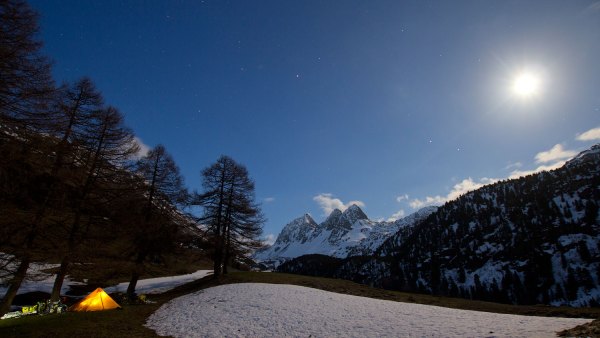
Full moon above camp below snowed-in Abula Pass in Switzerland’s Rhaetian Alps. It’s hard to beat the access that bicycles provide, especially when you’re willing to push or carry your bikes across short stretches that are impossible to ride.
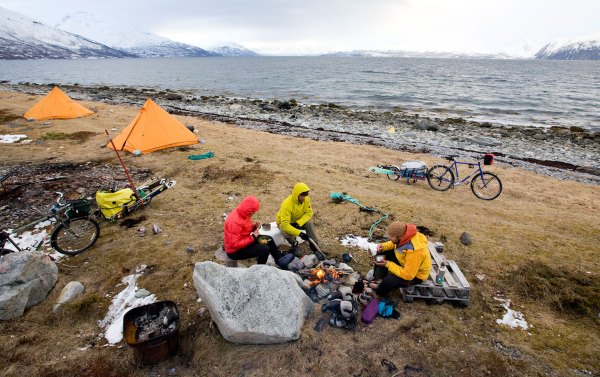
There’s nothing like pedal-powered exploration with a few good friends. Emily Johnson, Forrest Twombly and Tom Hite enjoy dinner around a driftwood fire in Arctic Norway.
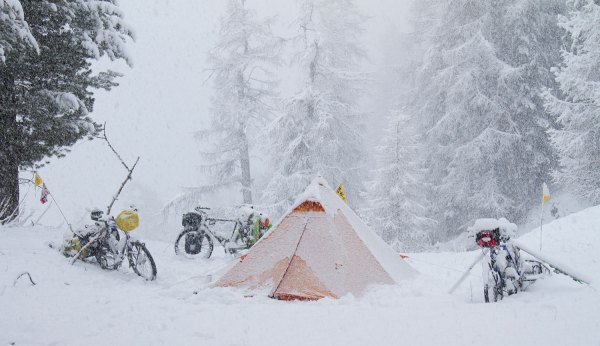
When you’re living outside, it’s best to be prepared for anything Mother Nature might throw at you. Fortunately, on this trip, we had our skis and spent the rest of the day skiing fresh powder in the mountains.
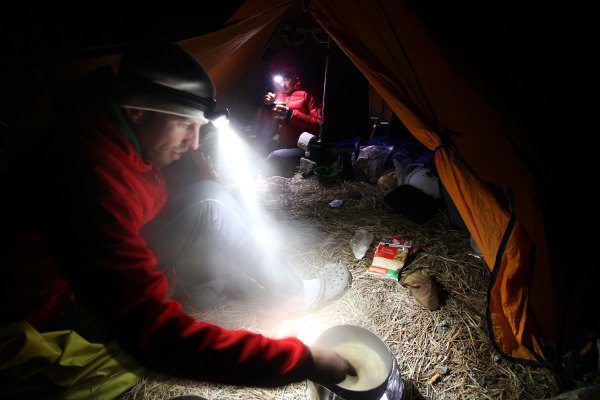
We often use a large, floorless, one-pole shelter on our cycling adventures. We like to be able to easily shelter with all our gear, and have plenty of room for sleeping, stretching out and weathering a multiday storm.
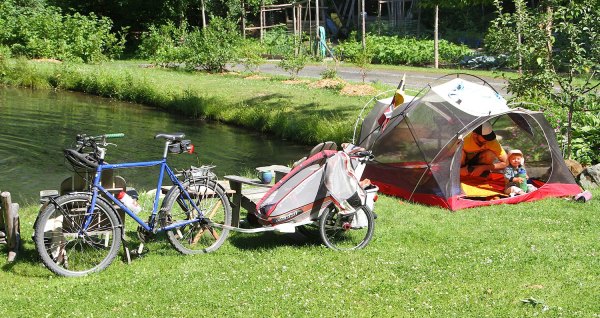
Bike-camping is a great way to take an adventure with little kids in tow. And if you’re going to seek permission along the way to camp on a friend’s land, make sure they’ve got a great swimming pond and plenty of fresh food in the garden, too!
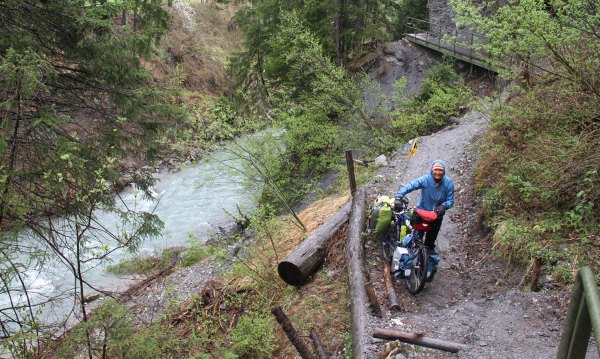
Sometimes the trail doesn’t work out as expected, but that’s just part of the fun. Unless you’re on some sort of schedule, it really shouldn’t matter how long it takes to get there, right?
